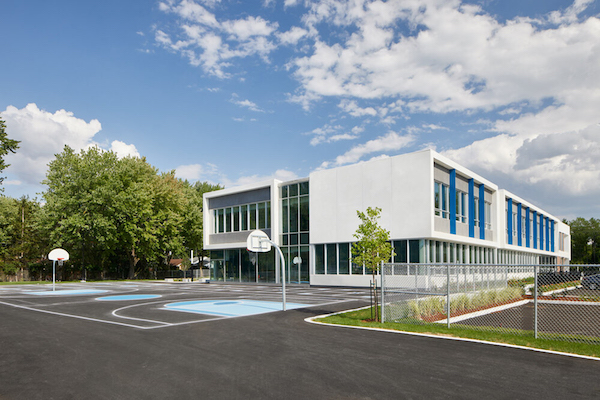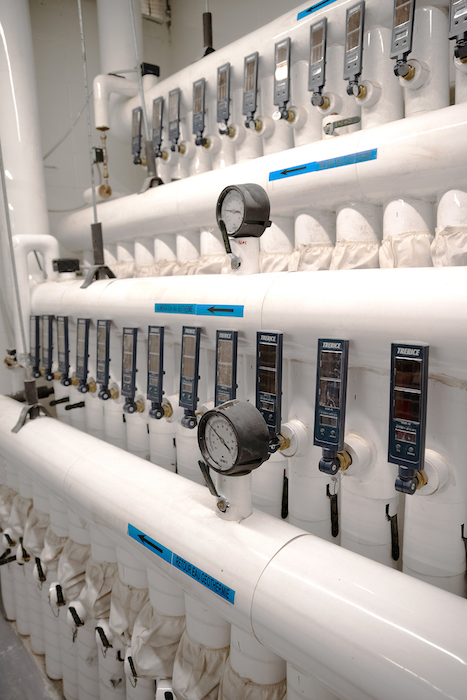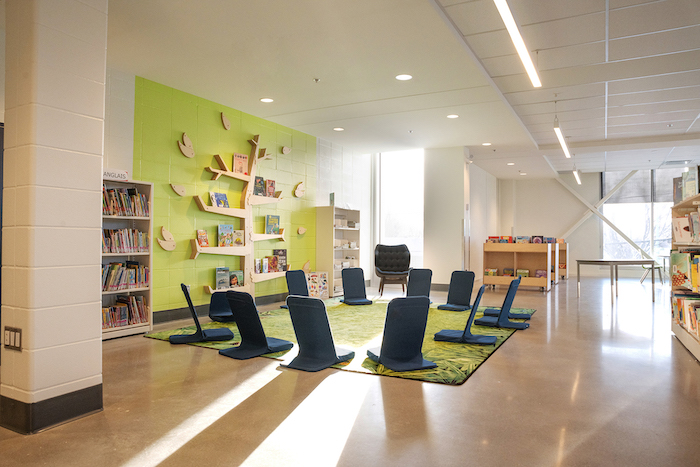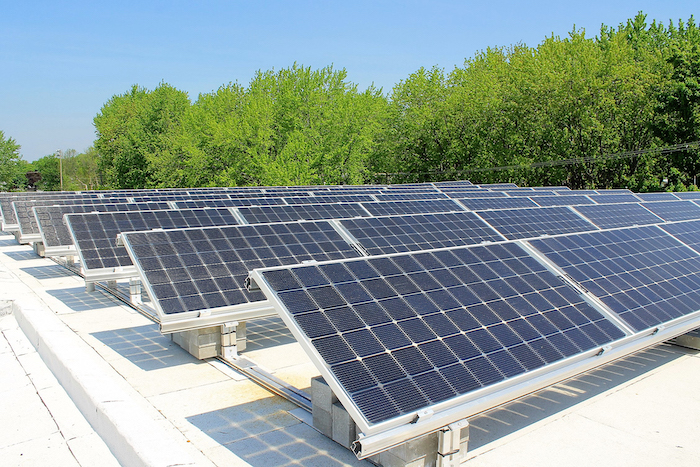
2021 #CCEawards Showcase: Curé-Paquin Primary School
November 3, 2021
By CCE
“This is really a project that speaks to sustainable development and what we expect buildings should be in the future.” – Jury
Category: Buildings
Engineering A Better Canada Award and Award of Excellence Winner: gbi
Completed in 2020, Curé-Paquin is the first project in Quebec—and the first school in Canada—to earn the Canada Green Building Council’s (CaGBC’s) Zero Carbon Building (ZCB) Certification. Montreal-based gbi designed its mechanical and electrical systems to ensure both energy savings and comfort.
Energy-saving features
Curé-Paquin was built in Saint-Eustache, Que., to meet Leadership in Energy and Environmental Design (LEED) Gold standards. As such, it incorporates features to reduce energy consumption and environmental impact, including:
- A geothermal system for heating and air conditioning.
- An electric heat accumulator.
- Radiant flooring.
- Advanced building controls.
- An integrated LED lighting system controlled by proximity and natural light sensors.
- Photovoltaic (PV) solar panels on the gymnasium’s roof.
Engineers at gbi worked closely with Montreal-based Leclerc Architectes to design the building envelope to minimize its energy consumption. No fossil fuels are used; all of the school’s energy needs are met by electricity.
The site’s 36 geothermal wells, each 300 feet deep, are coupled with an 80-kW energy storage accumulator. The wells meet all of the school’s heating requirements, while the accumulator manages peak electricity consumption.
A very high-efficiency energy recovery system recaptures heat from exhaust air and uses it to preheat incoming fresh air. And the PV solar panels, with a capacity of 27 kW, meet 10% of the school’s energy needs.
In addition to being highly efficient, a ZCB produces its own energy and/or uses carbon-free, renewable energy sources. For Curé-Paquin, the annual reduction in greenhouse gas (GHG) emissions is estimated at 2,800 t of CO2, which would otherwise take 1,600 trees to absorb. The roof-mounted solar panels produce 38,400 kWh per year, equivalent to the annual energy requirements of two single-family homes.
A complex goal
When CaGBC issued a call for proposals for ZCB pilot projects, gbi seized the opportunity to work with the Centre de services scolaire de la Seigneurie-des-Mille-Îles (CSSMI). The Curé-Paquin school was chosen as one of 16 Canadian projects that participated in the pilot program.
Earning CaGBC’s ZCB certification was rather complex, because it was still under development and thus relatively unfamiliar to most of the Canadian industry. A certified project must meet all of the requirements of the thermal energy demand intensity (TEDI) program, for example, but this performance indicator was little-known in the Quebec market.
Close collaboration was needed between gbi and Leclerc to promote passive heating. After devising about 10 energy models, they arrived at a balance between architectural and engineering requirements and achieved an energy consumption rate of 34 kWh/m2.
As part of the effort toward a zero-carbon goal, gbi’s engineers performed a life cycle analysis, calculating the amount of CO2 emitted by the manufacturing, transformation and installation of construction materials. The team spent some 100 hours in research and development (R&D) to develop the calculations required to perform this analysis.
By specifying durable heating, ventilation and air conditioning (HVAC) systems, which should last between 30 and 50 years, gbi increased the life cycle compared to traditional systems that last around 20 years. Calculations show these same systems will substantially reduce the school’s energy costs by an average of $45,000 per year.
Other environmental benefits
The engineers also opted for refrigerants with a low impact on the ozone layer and low GHG emissions, mercury-free lighting systems and low-flow toilets that reduce water consumption by 42%.
During construction, more than 85% of waste materials were recycled and all atmospheric contaminants were removed before the school’s opening, to ensure high indoor air quality (IAQ) for students and school staff.
Two charging stations were installed for electrical vehicles (EVs), along with bicycle stands to encourage students and staff to use active transportation.
Goals achieved and surpassed
In the end, Curé-Paquin met CSSMI’s budget and functional requirements. It also surpassed CaGBC’s ZCB requirements to obtain LEED Gold certification.
The school will consume 60% less energy than a building designed according to the National Energy Code of Canada for Buildings (NECB). It is certainly the most energy-efficient building for CSSMI, which represents more than 100 schools.
Curé-Paquin Primary School, Saint-Eustache, Que.
Award-winning firm (prime consultant): gbi, Montreal (Maxime Boisclair, P.Eng.; Pascale Lépine, P.Eng.; Guillaume Gigoux-Théorêt, P.Eng.; Minh Nguyen, P.Eng.; Jean-Michel St-Georges, P.Eng.; Mathieu Laflamme, P.Eng.; Antoine Fortier, P.Eng.; Geneviève Belleau, Tech.; Denis Lachance, Tech.; Sébastien Gravel, Tech.).
Owner: CSSMI.
Other key players: Leclerc Architectes, Construction SOCAM (general contractor), Sega Qc Electrique (electrical), Puits Bernier (geothermal), Regulvar (automatic controls), MC Ventilation (ventilation), Gicleurs FF (fire protection), STR Mécanique (plumbing), Akonovia (enhanced commissioning).



